Quick search
CTRL+K
Quick search
CTRL+K

Birmingham is England’s second largest city, and for tourists, a cozy city, linked to the surrounding region by the many canals dug in past time. Birmingham was probably the first real industrial city in the world, and the canals are still part of the urban space, which since the industrialization has been added with a lot of new features.
Industrial history is still an intriguing part of Birmingham’s identity, and in the surrounding area you can take a closer look at how people took the first steps towards the efficient large-scale industry we know today. In the city itself, in the Jewelery Quarter neighborhood, you can take a closer look at Birmingham’s role as a leader in a particular industry, namely the fine craftsmanship of goldsmiths and jewelers for centuries.
Birmingham is also a city with a nice atmosphere, not least in the pedestrian streets and along the canals in the city center. Here is a lot of museums, activities and heritage buildings, and if you need to take a closer look at the city’s status as an international shopping city, it is never far to major malls and shopping arcades.
There are many sights in the vicinity of Birmingham. You can enjoy beautiful cathedrals and remains of the early industrial era in England. The day trip can also go to Stratford-upon-Avon, where William Shakespeare, as him home town, leaves his mark to this day.
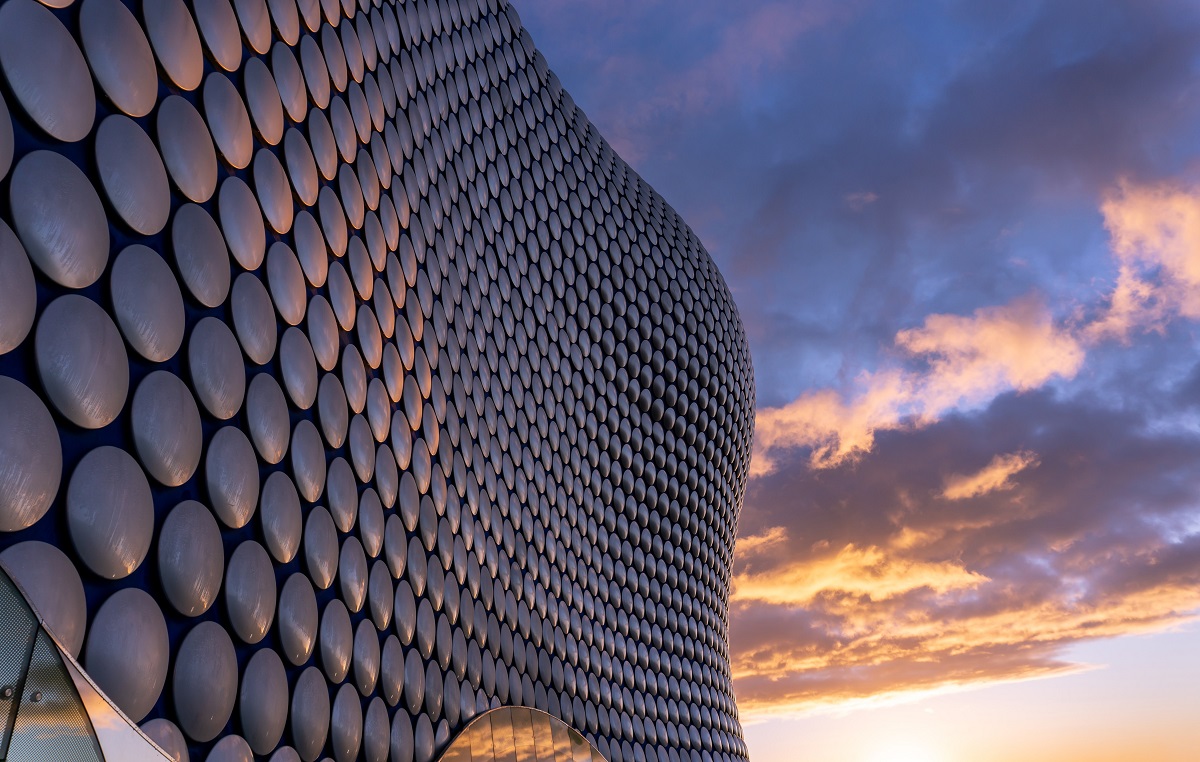
The department store chain Selfridges’ building in Birmingham is one of the city’s most striking buildings and a distinguished example of modern architecture. The building’s rounded shape forms an almost living part of the Bullring shopping area. The inauguration took place in 2003.
There are many canals in Birmingham city center and there is often an atmosphere along them. One of the best places to experience the cozy atmosphere along the water is around Brindley Place and along Gas Street.
There are five major and a number of minor canals that all meet and connect different parts of Birmingham. In the 1760s, around 35,000 inhabitants lived in the town, which industrially developed slowly with a poor infrastructure. It was a time of many constructions of canals in England. The first is considered to be the Bridgewater Canal, which opened in 1761 between Runcorn, Manchester and Leigh in North West England.
In 1767, a number of prominent people from Birmingham took the initiative for what was to become the Birmingham Canal between Birmingham and Wolverhampton. The canal was excavated the following years and connected with side canals to areas with, for example, coal mines. The canal was an immediate financial success, and it was the beginning of several canals in and around the city.
The old Birmingham Canal is the closest to the city centre. Here you can also go on various canal tours in the city. They sail from the canal side of the International Convention Centre, ICC (Centenary Square).
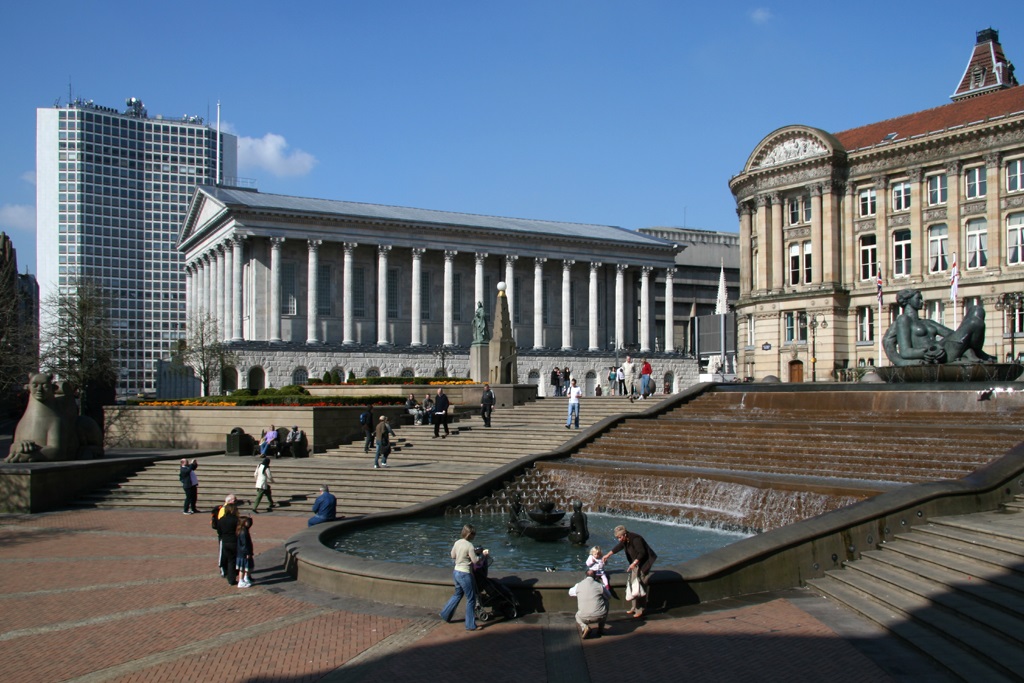
Victoria Square is considered the center of Birmingham and it is here that the city’s town hall is located. The square got its name in 1901 in memory of Queen Victoria, who had passed away the same year. On that occasion, the statue of Queen Victoria was put up in the square. However, the current one is a copy from 1951.
As the centre, Victoria Square is a good starting point for strolls in Birmingham’s city centre, and the area is also home to some of the city’s large and well-known public architectural sights.
Aston Hall is a large mansion, which in its present form stands in beautiful English late renaissance. The current mansion was built in the period 1618-1635, but Aston Hall’s history stretches back to the 1080s, when it went by the name of Estone.
In 1367 it became the property of John Holte, and it remained throughout the following centuries in the hands of the Holte family. In 1864 Birmingham City Council bought the mansion, the first time such a place had been bought by a city with the ambition of preserving the site as a museum for posterity.
Aston Hall is today set up as a regional museum under the city council’s Birmingham Museum & Art Gallery. The many rooms offer historic interiors and furnishings with, among other things, arts and crafts, in addition to the atmosphere of a typical English manor house.
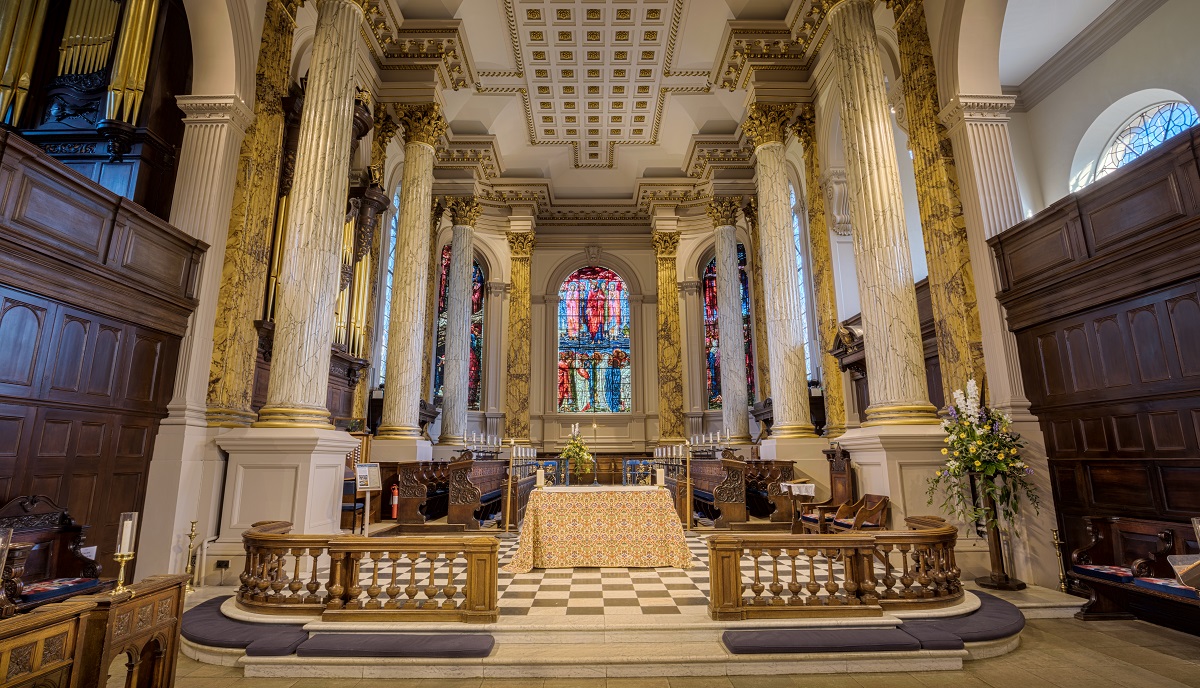
St Philip’s Cathedral is Birmingham’s cathedral under the Anglican Church of England. The church building is named after Robert Philips, who in 1710 donated the land on which the church and cemetery are located. The church was completed in 1715 as a parish church after four years of construction in baroque architecture. Birmingham was elevated to a bishopric in 1905, and on that occasion St Philip’s was made the area’s cathedral.
Council House is the seat of Birmingham City Council and of the city’s administration. It is one of the city’s largest public buildings. The Council House was built in the years 1874-1879. In an architectural competition, Yeoville Thomason won with his proposal, and he also oversaw the later extension, including the Birmingham Museum & Art Gallery. This part was built 1881-1885.
Behind the main building towards Victoria Square’s north side, a large extension was built in the years 1911-1919. The extension was built together with the main building through a corridor above street level. This was built with inspiration from the Bridge of Sighs in Venice.
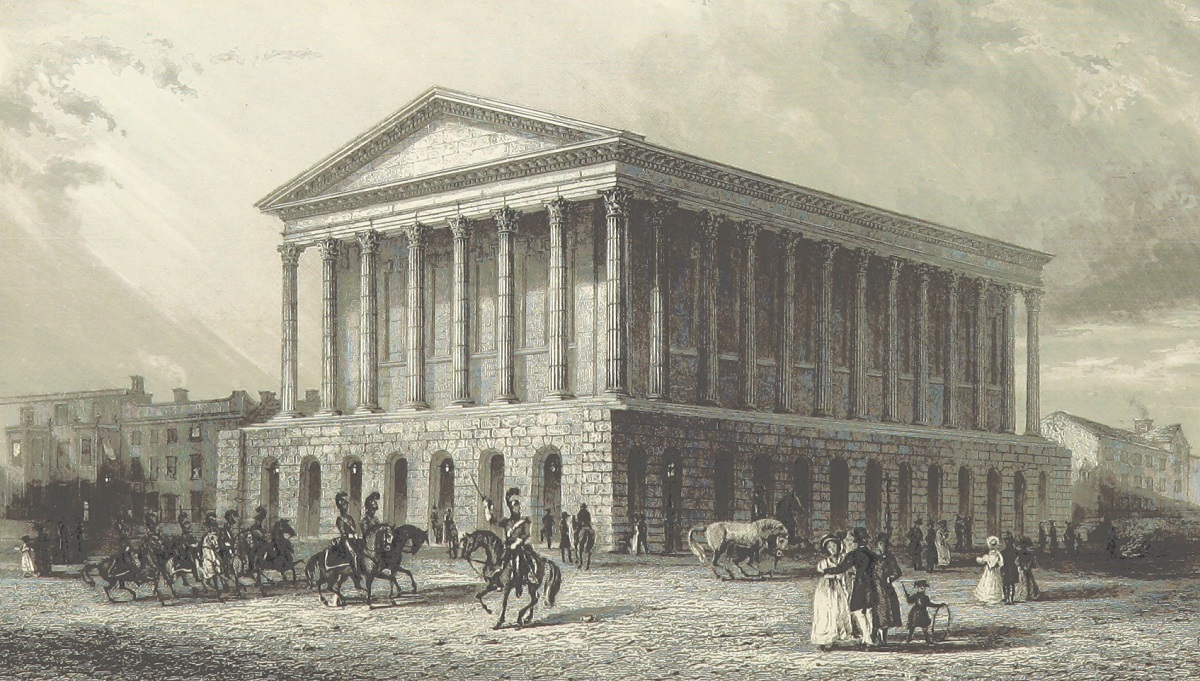
Birmingham’s Town Hall is located on the west side of Victoria Square. The Town Hall was established in 1834 as the country’s leading concert hall, and after 11 years it was reopened in 2007 after a large and careful restoration. The beautiful building was built as a setting for the classical music festival, the Birmingham Triennial Music Festival, which was held in the period 1784-1912.
At the art museum Ikon Gallery you can get to know modern art in all imaginable art and sensory forms. The museum was created precisely to get people interested in and possibly involved in modern art in Birmingham.
Ikon Gallery was founded in 1964 and housed in the former boarding school Oozells Street Boarding School, which was built in an imposing neo-Gothic style from 1877.
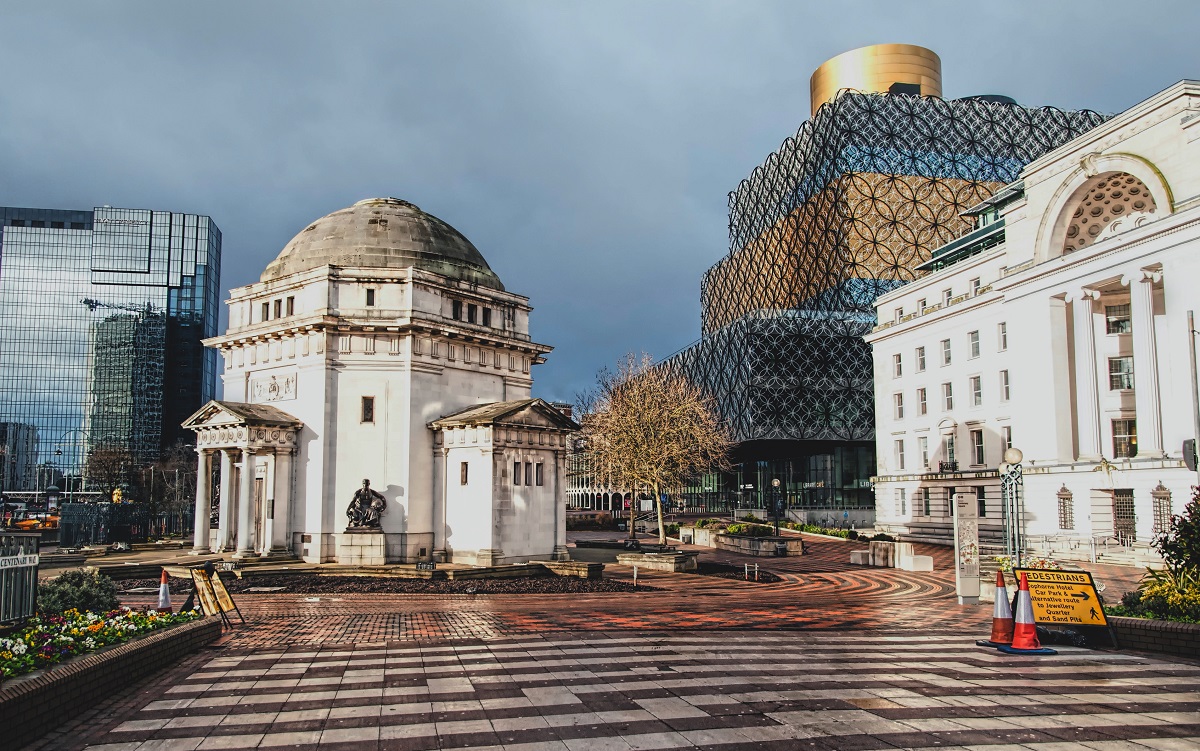
Centenary Square is a square named in 1989 to mark Birmingham’s 100th anniversary as an official city. Throughout the 20th century, the square has been central to the development of Birmingham’s public status buildings for, not least, various administrations.
A comprehensive plan for the construction of the Civic Center was in place, but only the Hall of Memory and part of Baskerville House were completed when the plan was shelved. The Civic Center was to consist of a series of splendid buildings inspired by the ancient Roman architectural style, but both World War II, new plans and architectural renewal slowed down the full realization, and since then several other buildings in modern architecture have continuously developed the square’s atmosphere.
Hall of Memory is an octagonal building that stands in Centenary Square as a memorial to the 12,320 Birmingham residents who lost their lives during the First World War. The monument was erected 1923-1925.
The four statues seen around the building represent the Army, Navy, Air Force and the women’s Women’s Services. Inside there are three works called Call, Front Line and Return. They respectively symbolize the departure to, the battles during and the return from the war.
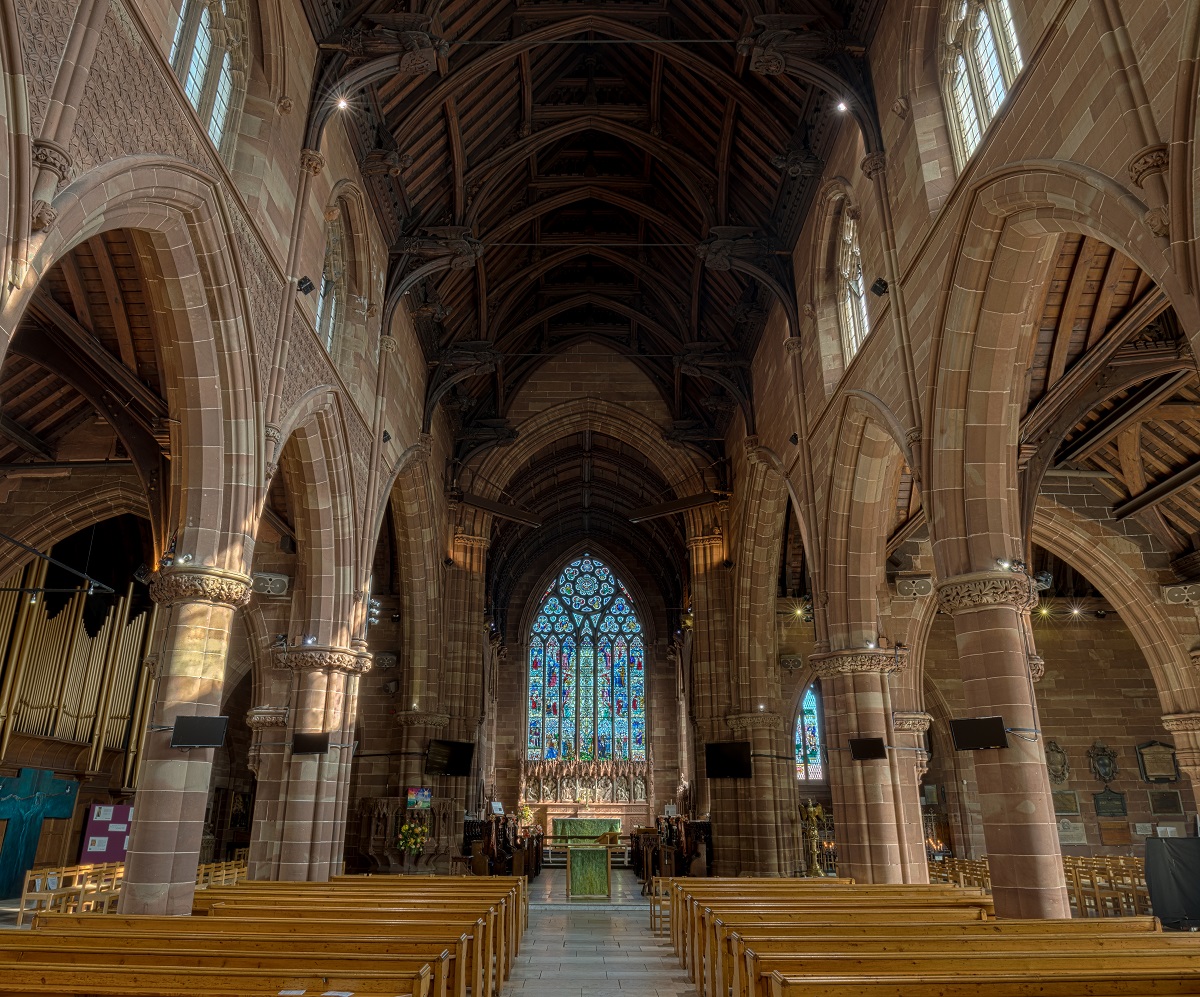
St Martin in the Bull Ring is Birmingham’s original parish church. The current church was built in 1873 on the site where there had been a church since the 13th century. The earliest documentation dates from 1263, and the original church was expanded until the middle of the 1800s.
In 1873, the church was partially demolished and rebuilt. The tower and spire were preserved on that occasion. In the church, there are window mosaics from 1875. However, only one of the mosaics is original. It was removed from the church in 1941, and the next day a bomb destroyed the others.
The brick building Argent Centre is one of the most distinctive in the Jewelery Quarter. It was built in 1863 as a factory building, and a curiosity was that there was a Turkish bath in the building. The bath used the steam produced in the factory’s workshops.
The Argent Centre stands as a fine example of the industrial buildings of the time. It was built in brick and cast iron, which at the time saved costs for fire insurance. In addition, a courtyard was created in the middle of the building, which allowed natural light from several places to reach the individual workplaces. Thus, the layout consisted of a number of smaller workshops on several floors.
There is continued focus on the smaller workplaces in the Argent Centre. Today, it is a place where many new companies can establish themselves and grow in an innovative environment.
You will also find the Pen Museum in the Argent Centre. It is a museum that conveys the history of the pen based on the fact that in the 1800s Birmingham was a world leader in the production and trade of pens. The Argent Center was itself home to a pen factory, and at the museum today you can look at both the history of pens and their production and trade.
The Chamberlain Clock is a large clock that was erected centrally in the Jewelery Quarter in 1903. The clock was erected in honor of the former Mayor and Member of Parliament Joseph Chamberlain, who for a time lived in the area’s Frederick Street.
The clock was inaugurated in January 1904, and the specific occasion was Joseph Chamberlain’s trip to South Africa from December 1902 to February 1903. The purpose of the trip was to create better relations and cooperation between the British and Africans.
The Chamberlain Clock was crafted in cast iron and stands in the streetscape in beautiful Edwardian style. It is now a landmark of the Jewelery Quarter.
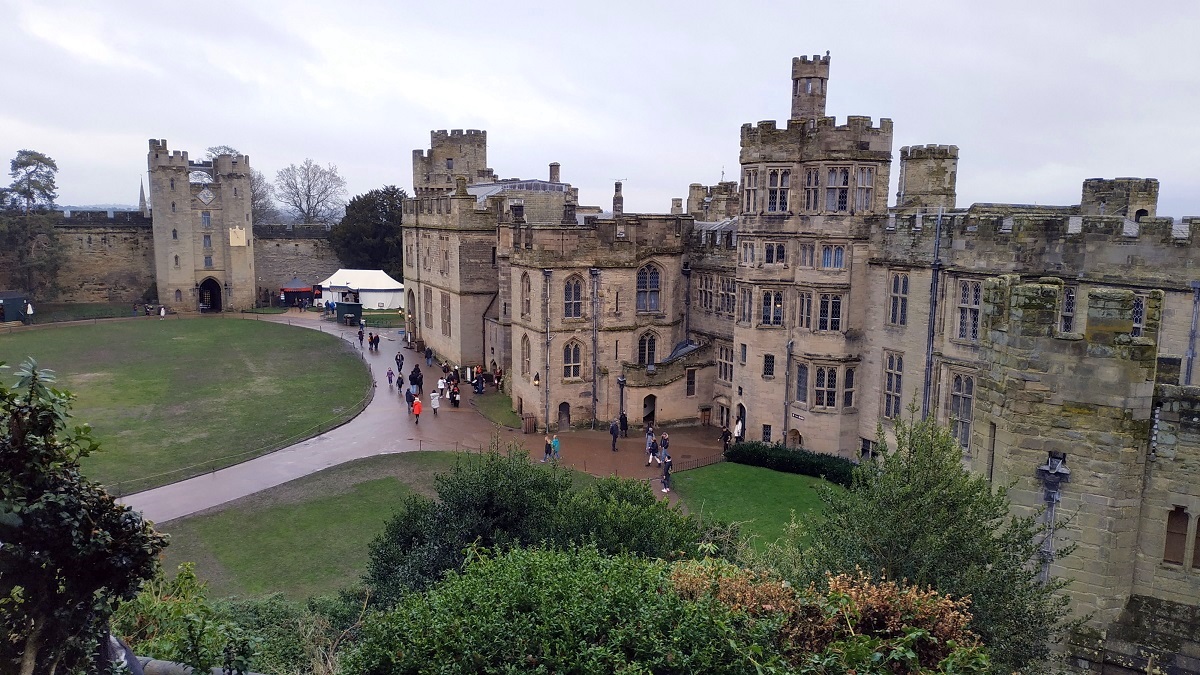
Warwick Castle is a fortress and a castle that, with its medieval castle atmosphere, attracts many visitors, who on the spot get a distinguished insight into historic castle life and period architecture.
The history of Warwick Castle goes back to the 9th century, where traditions say that the first solid defenses were built under Ethelfleda in 914. Before that there had been some wooden defenses, which were overrun by Danish Vikings under Ethelfleda’s father, Alfred the Great . You can see remains of Ethelfleda’s fortress at the so-called Ethelfleda’s Mound.
The actual castle and castle were begun in 1264 by Simon de Montfort’s troops, and not so many years later the place came into the possession of the Beauchamp family. They expanded Warwick Castle over the next 180 years.
Throughout the 17th and 18th centuries, the Greville family remodeled and expanded Warwick Castle into a country house, which is the magnificent residence you can see today, where Warwick Castle is run as a tourist attraction. The many halls and the large area are arranged so that you get a very vivid experience of both the place and impressions of English castle life as a whole.
Among the most exciting of the castle’s rooms are the beautiful Great Hall and State Rooms, while the Armory and the Watergate Tower, where a ghost is said to re-visit, are also worth seeing. Outside the castle you can see one of the world’s largest catapults, which has been recreated and has been on display since 2005.
The city of Coventry, with its 300,000 inhabitants in the city itself, is one of the largest in the Midlands. Coventry contains many sights of both new and old character. Due to the city’s extensive arms industry during the Second World War, it was the target of many bombings, and this is one of the reasons for the many newer buildings not usually seen in this number in other major English cities.
The cathedral in Coventry is special because of the modern expression in the new church building, which is located immediately next to the ruin that was bombed on 14 November 1940 during the Second World War. The former church, which was mainly built in the 1300s and 1500s, was England’s largest parish church when it was elevated to a cathedral in 1918. The foundation stone for the new cathedral was laid in 1956, and the inauguration took place on 25 May 1962. It was the same day as the Kaiser Wilhelm Gedächtniskirche in Berlin, which, like St Michael’s Cathedral, stands as a ruin next to a new church.
There are also several interesting museums in Coventry. The Herbert Art Gallery and Museum, also simply called The Herbert, houses a rich and varied collection of works of art and objects within, among other things, archaeology, history, natural history and a number of different art forms.
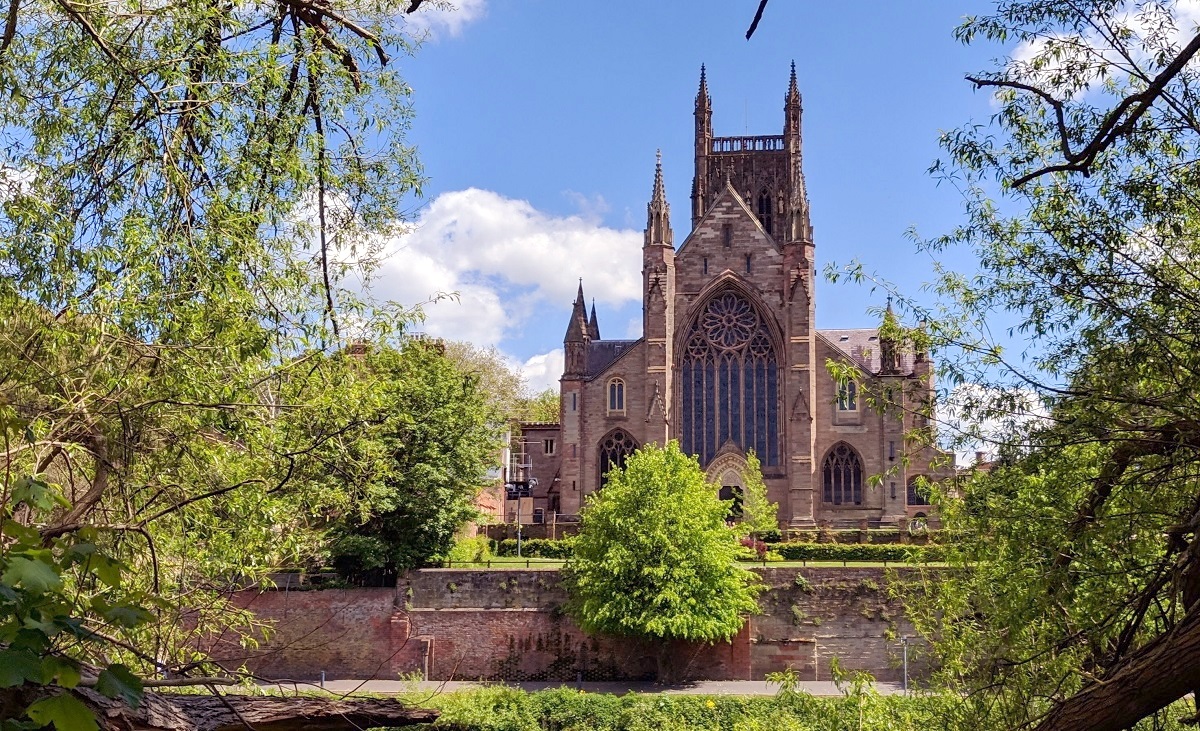
Worcester is a pleasant town with a long history, dating back to a settlement in the area around 400 BC. The Romans were here and later also the Anglo-Saxons, before the city was almost completely destroyed in 1041 after a rebellion against the Danish king Hardeknud, who also ruled England. Later, the city flourished through industrial development, and throughout the period the city was home to the region’s cathedral, which is Worcester’s primary attraction today.
Worcester Cathedral was beautifully built on the lawn of College Green, which stretches serenely towards the River Severn, which cuts through the city centre. The bishopric of Worcester was founded in the year 679, and it is today one of 42 in the Church of England. From the first building nothing remains today. The oldest preserved is the crypt, which originates from the 9th century cathedral. Otherwise, the current church building was built during the 12th and 13th centuries.
One of England’s historically well-known kings is buried in Worcester Cathedral; namely Johan, who is also called Johan without Land. Johan was the younger brother of King Richard I the Lionheart, and his unflattering name is due to his loss of Normandy to France. Later in his reign, which spanned the years 1199-1216, in 1215 Johan had to accept the Magna Carta, which was an English charter of freedom that effectively abolished the actual autocracy.
The town of Stratford-upon-Avon is one of the most visited in England. The small provincial town with 24,000 inhabitants is not least known as William Shakespeare’s birthplace and for its many preserved Tudor-style houses.
Henley Street is one of the oldest in Stratford-upon-Avon, and it was here that in 1556 John Shakespeare bought a house in typical Tudor style. Eight years later, in 1564, the house became the place where William Shakespeare was born. Next to the house, there is a Shakespeare Centre, which conveys the story of the world-famous Englishman.
If you are interested in further information about Shakespeare, then starting from the author’s birthplace, you can go to other houses in the city and in the region that have been important to him and his life. This applies, among other things, to Anne Hathaway’s Cottage. You can also see the Royal Shakespeare Theatre, a large national theater built in memory of William Shakespeare. It is beautifully situated on the River Avon in the center of the city.
Afterwards, you can continue to Holy Trinity Church, which is the church where William Shakespeare was both baptized and buried. Built on the banks of the River Avon from the year 1210, it is the oldest building in Stratford-upon-Avon. Shakespeare was baptized on 26 April 1564 and buried on 25 April 1616. He is physically buried in Thomas Balsall’s chapel from the 15th century. Here he lies next to his wife Anne Hathaway.
St Martins Market
debenhams.com
Colmore Row
greatwesternarcade.co.uk
42 High Street
marksandspencer.com
38 High Street
pavilionsshopping.com
East Bullring
selfridges.com
Severn Street
mailboxlife.com
New Street Station
thepallasades.co.uk
New Street, Corporation Street, High Street, Bullring, Edgbaston Street
Thinktank Science Museum
Millennium Point, Curzon Street
birminghammuseums.org.uk
National SeaLife Centre
The Waters Edge
sealifeeurope.com
Birmingham and Midland Museum of Transport
Chapel Lane, Wythall
bammot.org.uk
Dudley Zoo
2 The Broadway, Dudley
dudleyzoo.org.uk
Cadbury World
Linden Road, Bournville
cadburyworld.co.uk
BBC Public Space
The Mailbox Level 10
mailboxlife.com
Birmingham Nature Centre
Pershore Road, Edgbaston
birmingham.gov.uk
In England’s Roman era, the paved highway, Icknield Street, passed through the area where Birmingham is today. Shortly after the Roman invasion of England in the year 43, a fort was built in present-day Edgbaston in southern Birmingham, and although there was a smaller civilian settlement here, it did not result in any real urban development at that time.
A few centuries after the Romans had left England, Anglo-Saxons came to the country, and in the 600s a number of villages were established, including Birmingham, whose name derives from the name Beorma, who has been an Anglo-Saxon leader. Birmingham thus means “the place for the people of Beorma”.
When the Normans arrived, the town was still small, and smaller than, for example, Aston, which was one of the area’s leading settlements. In 1154, however, a marked change occurred when Peter de Birmingham obtained trading rights from King Henry II. From being an insignificant village, Birmingham suddenly became a growing trading village; Deritend Bridge crossed the Rea River right here, and Bullring became the marketplace for the many roads leading to it. The market meant development, and craftsmen and traders settled. The first major production in the city became wool with associated spinning mills, and Bull Ring became a leading textile market from the 13th century.
In the 1300s, more than 1,000 people lived in Birmingham and at that time only exceeded the size of Coventry and Warwick in Warwickshire, but the continued development of both small industry and commerce constantly made the city bigger, and so was During this time, the city’s first major splendor was erected; the church Martin’s Church.
The 16th century was the century in which Birmingham’s status changed to be a city brought about by real industrial development. There were both coal and iron nearby and the waterways made it possible to provide energy for smaller production sites; first by knives and nails, but later a larger weapon production. In the mid-1600s, 5,500 inhabitants lived here.
The modern industrial revolution started in the Birmingham area in the 18th century; not least in Ironbridge west of town. Birmingham was at that time the capital of the area, and for centuries it was named the first industrial city in the world. To ensure easier access to raw materials and shipping of goods to the rest of the country, the extensive canal system was dug around Birmingham from the 1760s.
By the mid-1700s, population growth had outpaced Birmingham than any other city in the Warwickshire region, and the population increased from 24,000 in 1750 to 74,000 in 1800, o before the end of the 19th century, 630,000 lived there, making Birmingham the second largest city in England. .
The railroad came to town in the 1830s, and it was at the same time that the city’s increasing economic strength and significant population numbers resulted in locally elected representatives in the English parliament. In 1838 an elected city council was also set up for the first time.
Later in the 19th century, and especially under Mayor Joseph Chamberlain in the 1870s, the City Council invested heavily in creating better conditions for the citizens of the city, who for many people lived in overcrowded slums. Expansion of the sewerage network as well as gas and water pipeline was part of the ambitious project.
Today, the influx of new citizens continued in the 20th century, and industrialization developed into, among other things, extensive weapons production, which resulted in heavy bombardments during World War II. More than 2,000 inhabitants were killed during the war years and almost 13,000 buildings were destroyed, which is why a major reconstruction and redevelopment program was initiated in 1946. Later, especially in the 1970s and 1980s, many of the city’s industries closed down and the areas have gradually been developed into new lovely places of culture and nightlife. Thus, there are efforts to attract more tourists; among other things for conferences.
The last half of the 20th century was the year when Birmingham became one of England’s most multicultural cities, and in 2001, ethnic minorities accounted for about 30% of the city’s citizens, who today count one million in the city itself and 2.3 million in Greater Birmingham.
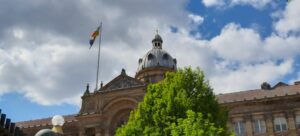
Birmingham, England
Overview of Birmingham
Birmingham is England’s second largest city, and for tourists, a cozy city, linked to the surrounding region by the many canals dug in past time. Birmingham was probably the first real industrial city in the world, and the canals are still part of the urban space, which since the industrialization has been added with a lot of new features.
Industrial history is still an intriguing part of Birmingham’s identity, and in the surrounding area you can take a closer look at how people took the first steps towards the efficient large-scale industry we know today. In the city itself, in the Jewelery Quarter neighborhood, you can take a closer look at Birmingham’s role as a leader in a particular industry, namely the fine craftsmanship of goldsmiths and jewelers for centuries.
About the Whitehorse travel guide
Contents: Tours in the city + tours in the surrounding area
Published: Released soon
Author: Stig Albeck
Publisher: Vamados.com
Language: English
About the travel guide
The Whitehorse travel guide gives you an overview of the sights and activities of the Canadian city. Read about top sights and other sights, and get a tour guide with tour suggestions and detailed descriptions of all the city’s most important churches, monuments, mansions, museums, etc.
Whitehorse is waiting for you, and at vamados.com you can also find cheap flights and great deals on hotels for your trip. You just select your travel dates and then you get flight and accommodation suggestions in and around the city.
Read more about Whitehorse and Canada
Canada Travel Guide: https://vamados.com/canada
City tourism: https://visitwhite-horse.ca
Main Page: https://www.vamados.com/
Buy the travel guide
Click the “Add to Cart” button to purchase the travel guide. After that you will come to the payment, where you enter the purchase and payment information. Upon payment of the travel guide, you will immediately receive a receipt with a link to download your purchase. You can download the travel guide immediately or use the download link in the email later.
Use the travel guide
When you buy the travel guide to Whitehorse you get the book online so you can have it on your phone, tablet or computer – and of course you can choose to print it. Use the maps and tour suggestions and you will have a good and content-rich journey.


St Philip’s Cathedral is Birmingham’s cathedral under the Anglican Church of England. The church building is named after Robert Philips, who in 1710 donated the land on which the church and cemetery are located. The church was completed in 1715 as a parish church after four years of construction in baroque architecture. Birmingham was elevated to a bishopric in 1905, and on that occasion St Philip’s was made the area’s cathedral.
Council House is the seat of Birmingham City Council and of the city’s administration. It is one of the city’s largest public buildings. The Council House was built in the years 1874-1879. In an architectural competition, Yeoville Thomason won with his proposal, and he also oversaw the later extension, including the Birmingham Museum & Art Gallery. This part was built 1881-1885.
Behind the main building towards Victoria Square’s north side, a large extension was built in the years 1911-1919. The extension was built together with the main building through a corridor above street level. This was built with inspiration from the Bridge of Sighs in Venice.

Birmingham’s Town Hall is located on the west side of Victoria Square. The Town Hall was established in 1834 as the country’s leading concert hall, and after 11 years it was reopened in 2007 after a large and careful restoration. The beautiful building was built as a setting for the classical music festival, the Birmingham Triennial Music Festival, which was held in the period 1784-1912.
At the art museum Ikon Gallery you can get to know modern art in all imaginable art and sensory forms. The museum was created precisely to get people interested in and possibly involved in modern art in Birmingham.
Ikon Gallery was founded in 1964 and housed in the former boarding school Oozells Street Boarding School, which was built in an imposing neo-Gothic style from 1877.

Centenary Square is a square named in 1989 to mark Birmingham’s 100th anniversary as an official city. Throughout the 20th century, the square has been central to the development of Birmingham’s public status buildings for, not least, various administrations.
A comprehensive plan for the construction of the Civic Center was in place, but only the Hall of Memory and part of Baskerville House were completed when the plan was shelved. The Civic Center was to consist of a series of splendid buildings inspired by the ancient Roman architectural style, but both World War II, new plans and architectural renewal slowed down the full realization, and since then several other buildings in modern architecture have continuously developed the square’s atmosphere.
Hall of Memory is an octagonal building that stands in Centenary Square as a memorial to the 12,320 Birmingham residents who lost their lives during the First World War. The monument was erected 1923-1925.
The four statues seen around the building represent the Army, Navy, Air Force and the women’s Women’s Services. Inside there are three works called Call, Front Line and Return. They respectively symbolize the departure to, the battles during and the return from the war.

St Martin in the Bull Ring is Birmingham’s original parish church. The current church was built in 1873 on the site where there had been a church since the 13th century. The earliest documentation dates from 1263, and the original church was expanded until the middle of the 1800s.
In 1873, the church was partially demolished and rebuilt. The tower and spire were preserved on that occasion. In the church, there are window mosaics from 1875. However, only one of the mosaics is original. It was removed from the church in 1941, and the next day a bomb destroyed the others.
The brick building Argent Centre is one of the most distinctive in the Jewelery Quarter. It was built in 1863 as a factory building, and a curiosity was that there was a Turkish bath in the building. The bath used the steam produced in the factory’s workshops.
The Argent Centre stands as a fine example of the industrial buildings of the time. It was built in brick and cast iron, which at the time saved costs for fire insurance. In addition, a courtyard was created in the middle of the building, which allowed natural light from several places to reach the individual workplaces. Thus, the layout consisted of a number of smaller workshops on several floors.
There is continued focus on the smaller workplaces in the Argent Centre. Today, it is a place where many new companies can establish themselves and grow in an innovative environment.
You will also find the Pen Museum in the Argent Centre. It is a museum that conveys the history of the pen based on the fact that in the 1800s Birmingham was a world leader in the production and trade of pens. The Argent Center was itself home to a pen factory, and at the museum today you can look at both the history of pens and their production and trade.
The Chamberlain Clock is a large clock that was erected centrally in the Jewelery Quarter in 1903. The clock was erected in honor of the former Mayor and Member of Parliament Joseph Chamberlain, who for a time lived in the area’s Frederick Street.
The clock was inaugurated in January 1904, and the specific occasion was Joseph Chamberlain’s trip to South Africa from December 1902 to February 1903. The purpose of the trip was to create better relations and cooperation between the British and Africans.
The Chamberlain Clock was crafted in cast iron and stands in the streetscape in beautiful Edwardian style. It is now a landmark of the Jewelery Quarter.
Similar to Birmingham Travel Guide
